If you’re aiming to lose a bit of weight without feeling like you’re constantly starving, a 1700 calorie meal plan can be that sweet spot. It’s enough to keep your energy steady through workouts and long days, while still creating a solid calorie deficit for gradual fat loss. The key? Getting the portions right, spacing your meals smartly, and not skimping on protein.
At ReciMe, we’re all about making everyday eating easier – not stricter. Whether you’re planning meals to fuel your training or just want to stop stressing over what’s for dinner, our app helps you save recipes from Instagram or TikTok, organize your grocery list by aisle, and build weekly meal plans that actually fit your goals. Grab ReciMe now, power up your nutrition, and let’s get into the 1,700 calorie plan.


What Is a 1,700 Calorie Diet?
A 1,700 calorie diet is basically a middle-ground approach to eating that works for a lot of people – especially those trying to lose a bit of weight without going too low. It’s enough food to keep you full and focused throughout the day, while still creating a gentle calorie deficit if you’re moderately active. The trick isn’t just hitting the number – it’s making those calories count by filling your plate with high-protein meals, healthy fats, whole grains, and loads of veggies.
This kind of plan tends to suit women with light to moderate activity levels, or men who are more sedentary but still want to eat intentionally. It’s also popular for body recomposition goals – like losing fat while holding onto muscle – especially when paired with resistance training. You’re not cutting out entire food groups or living on protein shakes. You’re just eating smart, keeping portions in check, and paying attention to what actually fuels you.
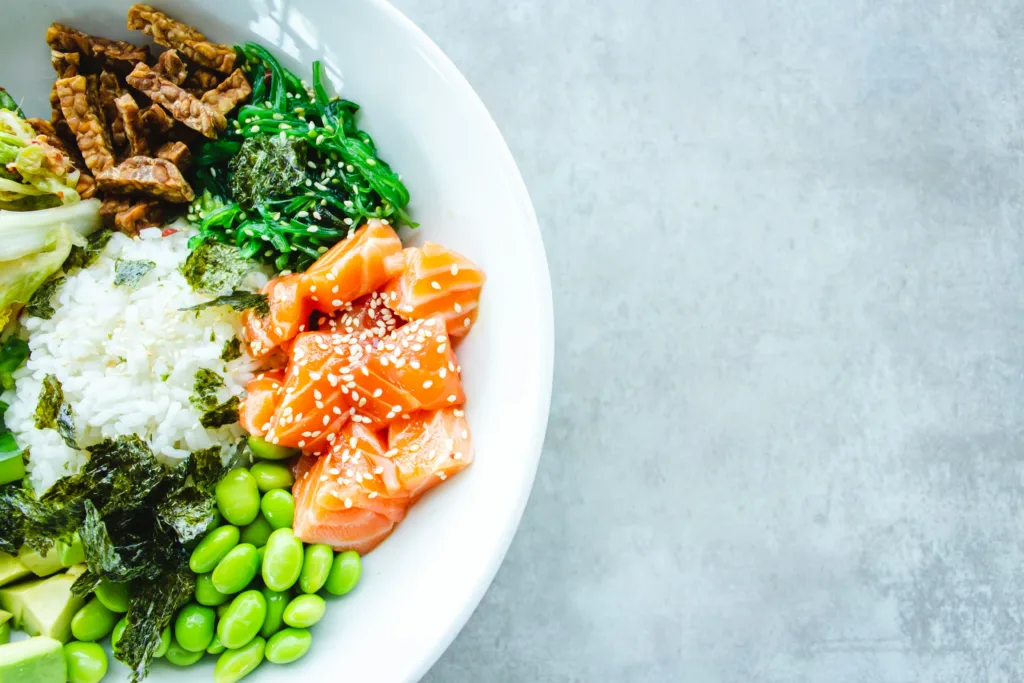
Benefits of a 1,700-Calorie Meal Plan
Finding a calorie target that actually works for your body (and your lifestyle) can feel like a juggling act. But when done right, a 1,700-calorie plan can strike that just-right balance – enough to keep you satisfied, not so much that progress stalls. Here’s what makes this approach worth trying.
- It supports steady weight loss without burnout: You’re not crash dieting or skipping meals – 1,700 calories gives you enough room to eat real food and still see results. It’s the kind of plan that fits into your life instead of taking it over.
- You get a solid amount of food throughout the day: Three meals and two snacks? Totally doable. With smart planning, you’ll stay full, focused, and way less likely to raid the snack drawer at 10 p.m.
- Helps preserve muscle while losing fat: Pair it with a high-protein focus and some strength training, and you’ve got a setup that supports body recomposition – not just the number on the scale.
- Teaches portion awareness without obsession: You’ll start to get a feel for what a balanced plate actually looks like. No calorie math on the fly, no food guilt – just meals that make sense.
- Easy to adapt to different lifestyles: Whether you’re mostly at a desk, chasing kids around, or hitting the gym a few times a week, you can adjust the ingredients and timing to match your day.
- Less food waste, more meal prep wins: A plan with structure means fewer random leftovers and better grocery planning. Which, let’s be honest, makes life way easier midweek.
Sample 7-Day 1,700-Calorie Meal Plan
Meal planning gets way easier when you’ve got a roadmap – especially one that doesn’t involve eating the same thing every day. Below you’ll find seven full days of meals designed to land around 1,700 calories daily. Each one includes breakfast, lunch, dinner, and two snacks that actually make sense (and taste good).
Day 1 – Balanced and Familiar
Breakfast – Around 250 calories
Plain non-fat Greek yogurt (¾ cup) topped with ¼ cup granola and a full cup of sliced strawberries. Creamy, crunchy, and sweet without overdoing it.
Morning Snack – 183 calories
One medium pear and a mozzarella cheese stick. Easy to pack, easy to eat.
Lunch – Around 370 calories
Sandwich made with two slices of whole grain bread, 3 oz sliced turkey breast, tomato, and a thin swipe of mayo. Add a cup of blueberries on the side for something fresh.
Afternoon Snack – 168 calories
A small bowl of air-popped popcorn (1 cup) mixed with 2 tablespoons of almonds and 1 tablespoon of raisins. Sweet, salty, satisfying – and it hits that mid-afternoon craving.
Dinner – 473 calories
Three ounces of broiled salmon served with a cup of cooked quinoa and a warm veggie mix (cauliflower + broccoli) dressed with a light olive oil vinaigrette. Feels like dinner-dinner.
Evening Snack – 181 calories
Two small chocolate chip cookies and a glass of skim milk (1 cup). Because you can absolutely still have dessert.
- Total for the day comes out to about 1,650 calories – enough to keep you full, energized, and on track without tipping into “too much” territory.
Day 2 – Light but Filling
Breakfast – Around 260 calories
One slice of whole wheat toast topped with 2 tablespoons of guacamole and 1 ounce of reduced-fat cheddar. On the side: a cup of strawberries for something cool and sweet.
Morning Snack – 166 calories
Half a cup of plain non-fat Greek yogurt with 2 tablespoons of granola and a handful of fresh strawberries. Easy, creamy, and gets the job done.
Lunch – 408 calories
A slice of whole grain bread spread with half a mashed avocado and topped with one fried egg. Add a crisp apple on the side for fiber and crunch.
Afternoon Snack – 220 calories
A square of dark chocolate (15g), 2 tablespoons of almonds, and 2 tablespoons of raisins. A tiny little trail mix moment to get you through the afternoon.
Dinner – 458 calories
Shrimp stir-fry with 3 ounces of shrimp, a cup of brown rice, and a sautéed mix of red bell pepper and broccoli cooked in olive oil. Cozy, colorful, and satisfying.
Evening Snack – 157 calories
Two cups of air-popped popcorn and a medium apple. Snacky but still smart.
- Total for the day comes out to around 1,686 calories – a little under but still right in the zone, especially if you like your dinners light.
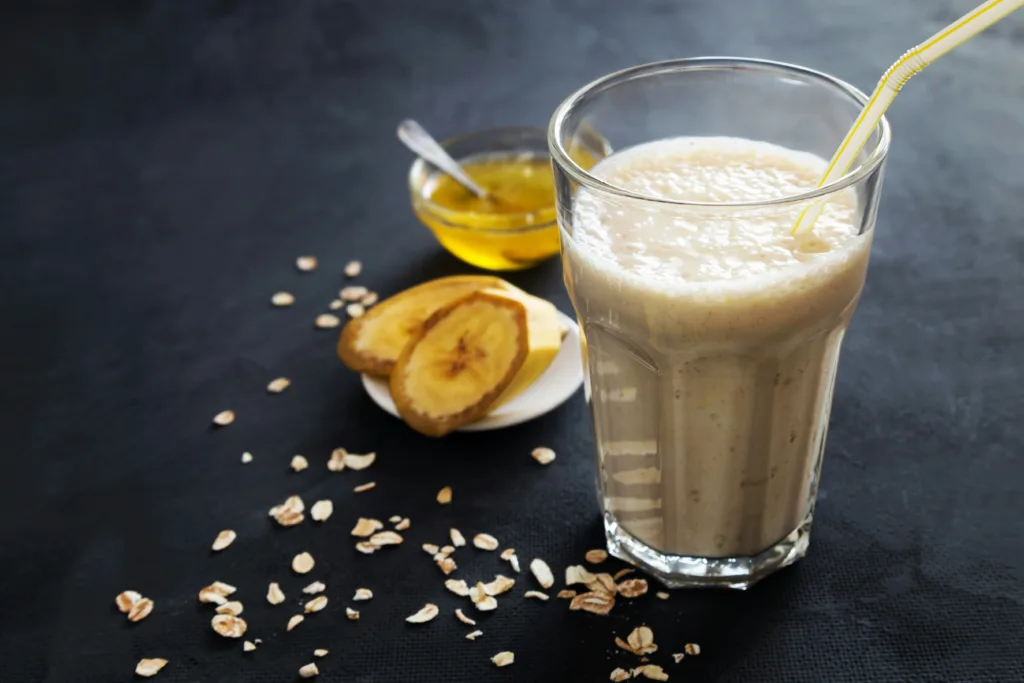
Day 3 – Packed with Protein
Breakfast – 301 calories
One packet of plain oatmeal made with ⅔ cup skim milk, topped with a sliced banana and 1 tablespoon of chopped walnuts. Warm, simple, and filling.
Morning Snack – 189 calories
A full cup of shelled edamame. High protein, no nonsense.
Lunch – Around 382 calories
Two slices of whole grain bread filled with 3 ounces of canned tuna (mixed with 2 teaspoons of mayo) and a handful of fresh spinach. Add a cup of raw red pepper strips on the side.
Afternoon Snack – 166 calories
Half a cup of Greek yogurt, 1 cup of strawberries, and 2 tablespoons of granola. If it’s working, keep it in rotation.
Dinner – Around 450 calories
Grilled chicken (3 oz), a cup of sautéed kale and steamed broccoli (olive oil for cooking), and a cup of pasta topped with tomato sauce. A bit of comfort, a bit of green.
Evening Snack – 183 calories
An apple with a slice of cheddar cheese. Old-school snack, still undefeated.
- Total for the day comes out to about 1,670 calories – slightly over, but totally balanced with extra protein to keep your metabolism humming.
Day 4 – Plant-Forward and Colorful
Breakfast – 334 calories
Smoothie made with 1 cup non-fat Greek yogurt, 1 banana, ½ cup almond milk, and 1 tablespoon peanut butter. Creamy and not too sweet – you’ll probably want this again.
Morning Snack – 140 calories
A cup of grapes and 2 tablespoons of almonds. Hydrating and crunchy all at once.
Lunch – Around 310 calories
Salmon (3 oz), brown rice (½ cup), and a side of crunchy red bell pepper sticks. Quick, fresh, and gets the job done.
Afternoon Snack – 189 calories
Roasted chickpeas (¼ cup) with 2 tablespoons of raisins. A little savory, a little sweet.
Dinner – 532 calories
A hearty bowl of greens: 2 cups spinach, 1 cup chopped carrots, 3 oz grilled chicken, 1 cup cooked quinoa, and a tablespoon of vinaigrette. This one’s a meal prep dream.
Evening Snack – 145 calories
Two cups of air-popped popcorn and 15 grams of dark chocolate. Because popcorn deserves a plus one.
- Total for the day lands around 1,700 calories – still in range, especially if you’re moving a bit more or lifting that day.
Day 5 – Fiber First
Breakfast – 295 calories
One cup of non-fat plain Greek yogurt with a full cup of blueberries and 2 tablespoons of almonds. Lots of fiber, lots of flavor.
Morning Snack – 145 calories
Two cups of air-popped popcorn tossed with 1 tablespoon of dark chocolate chips. Sounds indulgent, works surprisingly well.
Lunch – 403 calories
Three ounces of grilled chicken over a kale salad with 2 teaspoons of olive oil vinaigrette and 1 tablespoon of chopped walnuts. Add a small whole grain roll for balance.
Afternoon Snack – 150 calories
Hummus (¼ cup) and carrot sticks (1 cup). You already know this one’s a go-to.
Dinner – Around 500 calories
One cup each of black beans and brown rice, plus diced red pepper, fresh tomato, and 2 tablespoons of guac. Basically a burrito bowl, minus the tortilla.
Evening Snack – 200 calories
One banana with a tablespoon of peanut butter. Classic and comforting.
- Total for the day adds up to around 1,700 calories – filling, plant-heavy, and easy to batch prep if needed.
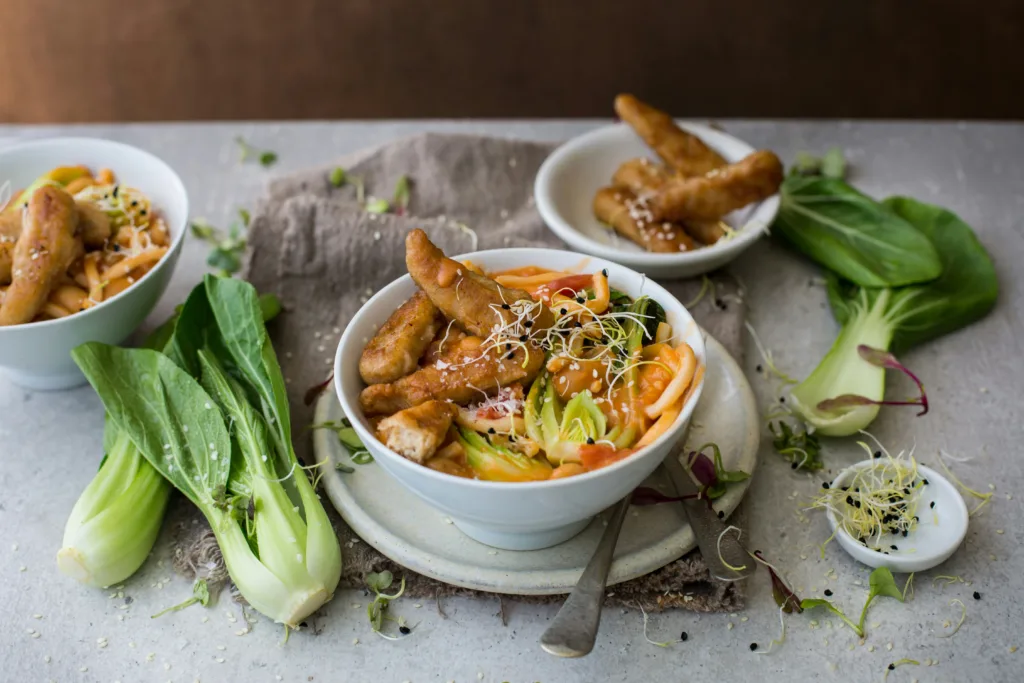
Day 6 – Comfort but Make It Nutritious
Breakfast – 296 calories
Two eggs, pan-fried in a teaspoon of butter, one slice of whole wheat toast, and a juicy tomato on the side. Looks basic. Tastes anything but.
Morning Snack – 166 calories
A small container (5 oz) of vanilla Greek yogurt and a cup of strawberries. Chill and cheerful.
Lunch – 440 calories
Salad with spinach and green beans, dressed with 1 tablespoon olive oil vinaigrette, topped with 3 oz canned tuna. Serve it with a whole grain roll and an orange.
Afternoon Snack – 131 calories
Hummus (¼ cup) with raw broccoli florets (1 cup). Crunchy and oddly satisfying.
Dinner – 536 calories
Chickpeas (1 cup) over lettuce and tomato, 2 teaspoons of dressing, and one slice of toast with a teaspoon of butter. Filling and fiber-rich.
Evening Snack – Around 140-160 calories
Half a cup of low-fat or reduced-sugar vanilla ice cream. No explanation needed.
- Total for the day is right around 1,710 calories – flexible and cozy, with plenty of room for real food and even dessert.
Day 7 – Ending on a High Note
Breakfast – 296 calories
One slice of whole wheat toast topped with two chopped boiled eggs mixed with a teaspoon of mayo. Add a tomato on the side to freshen it up.
Morning Snack – 171 calories
One orange and 2 tablespoons of mixed nuts. Tangy, crunchy, snackable.
Lunch – 414 calories
Grilled chicken (3 oz) with pasta (1 cup), sautéed spinach and cauliflower (2 cups total) in olive oil. Comfort meal with a little veggie twist.
Afternoon Snack – 183 calories
One apple and a slice of cheddar cheese. Repeat-worthy.
Dinner – 483 calories
Four ounces of grilled trout, one cup of brown rice, and roasted asparagus (about 10 spears) with olive oil.
Evening Snack – 132 calories
One cup of strawberries with a tablespoon of chocolate chips. Sweet and light to wrap it up.
- Total for the day comes out to roughly 1,679 calories – just under, but honestly, a perfect landing spot to close the week.
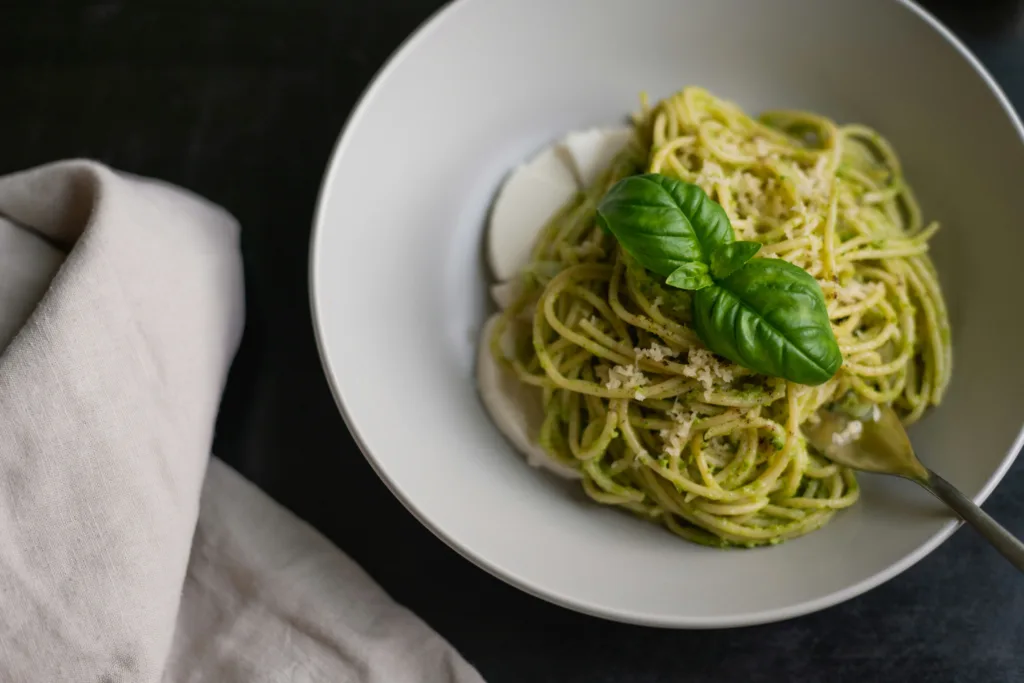
Potential Drawbacks to Watch Out For
A 1,700-calorie plan can work really well for a lot of people, but it’s not without its quirks. Before you fully commit, it’s worth knowing where things might get a little tricky – and how to stay ahead of them.
- It might not be enough if you’re super active: If you’re lifting heavy five days a week, training for a race, or constantly on your feet, 1,700 calories might leave you feeling drained. It’s a great baseline – but not a one-size-fits-all solution.
- You’ll need to be more mindful with protein: Especially if your goal is to maintain or build muscle. Hitting your daily grams takes some planning – this isn’t the time for protein to be an afterthought.
- There’s less wiggle room for extras: A daily latte, random snack, or extra spoon of peanut butter? Those add up fast on a tighter calorie budget. It doesn’t mean you can’t have them – it just means you’ll need to shuffle things around to make space.
- Meal prep helps… or you’ll get bored fast: When you’re working within calorie limits, food variety matters. If you’re not prepping or planning ahead, it’s easy to fall into a repeat-meal rut.
- Everyone’s metabolism is different: Some people might lose weight on 1,700. Others might not budge at all – especially if they’ve been dieting hard or under-eating for a long time. The scale isn’t the only metric worth watching.
- It can feel restrictive for some: Let’s be real – some days, you’re just hungrier. If you treat 1,700 as a hard cap instead of a flexible target, it might backfire. Always check in with your body, not just the numbers.
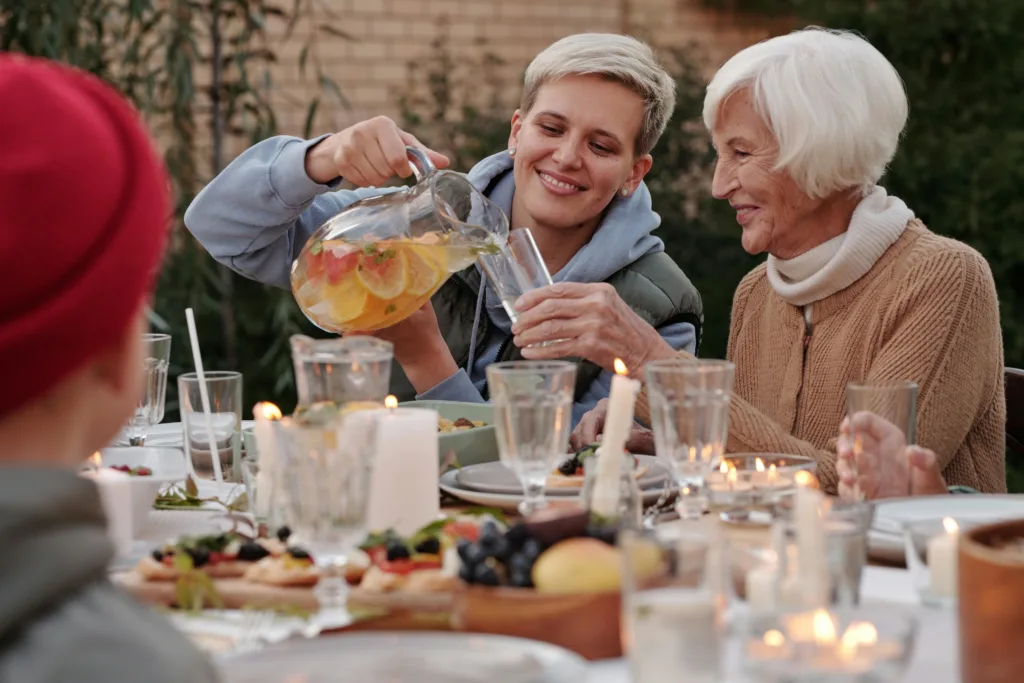
Who Should (and Shouldn’t) Follow a 1,700-Calorie Meal Plan
If you’re moderately active, looking to lose a bit of weight, or just want some structure without jumping into anything too extreme – 1,700 calories might be right in your sweet spot. It tends to work well for women with light-to-moderate exercise routines or men with more sedentary lifestyles. It’s also a decent fit for folks focusing on body recomposition (aka fat loss while holding onto muscle), especially when paired with a bit of strength training and consistent meals.
That said, this isn’t the move for everyone. If you’re very active, pregnant, breastfeeding, or recovering from a history of disordered eating, 1,700 might be too low – or too limiting. Same goes for anyone who’s been under-eating for a while and needs to restore balance first. Always better to check in with a dietitian or doctor before dialing your calories down, especially if something feels off.
Conclusion
A 1,700-calorie meal plan isn’t flashy or extreme – and honestly, that’s what makes it work. It gives you structure without cutting out real food, and enough flexibility to eat well without obsessing over every bite. Whether your goal is fat loss, better energy, or just fewer “what’s for dinner?” moments, this plan can keep you moving in the right direction without feeling like a chore.
FAQ
1. Can I lose weight eating 1,700 calories a day?
Yes, if your body burns more than that in a day, you’ll likely create a calorie deficit and start to lose weight. It depends on your activity level, body size, and metabolism, though, so results vary.
2. What kind of foods should I focus on?
Think protein-forward meals, fiber-rich carbs, and healthy fats. Chicken, salmon, beans, quinoa, Greek yogurt, eggs, veggies – all the good stuff that keeps you full and fueled.
3. Is 1,700 calories enough for men?
It can be, especially for men with lower activity levels or those aiming for fat loss. But highly active men or those with physically demanding jobs might need more to feel satisfied and recover properly.
4. Can I eat out and still stick to 1,700 calories?
Totally possible, but it helps to plan ahead. Check nutrition info if it’s available, split portions, and balance your other meals around it. No need to skip the fun – just be intentional.
5. Do I need to count calories every day?
Not forever. Tracking can be helpful at first to understand portions, but long-term, it’s more about building habits and finding meals that work for your lifestyle.
